🟢 Building a proper innovation portfolio - Part 1
Few corporations have been capable of transitioning from a pipeline to an innovation portfolio. We can blame well-known business books for oversimplifying the issues at stake, but also, the non-linearity of a portfolio strategy genuinely baffles most executives. Let's share some insights...

I have already discussed many times why, at best, innovation pipelines are usually only capable of delivering incremental innovation. And only a few days I pointed out a few key issues of the Strategyzer portfolio framework. After having designed from scratch or rebuild existing innovation portfolios for dozens of industries, my get-go methodology is generally as such:
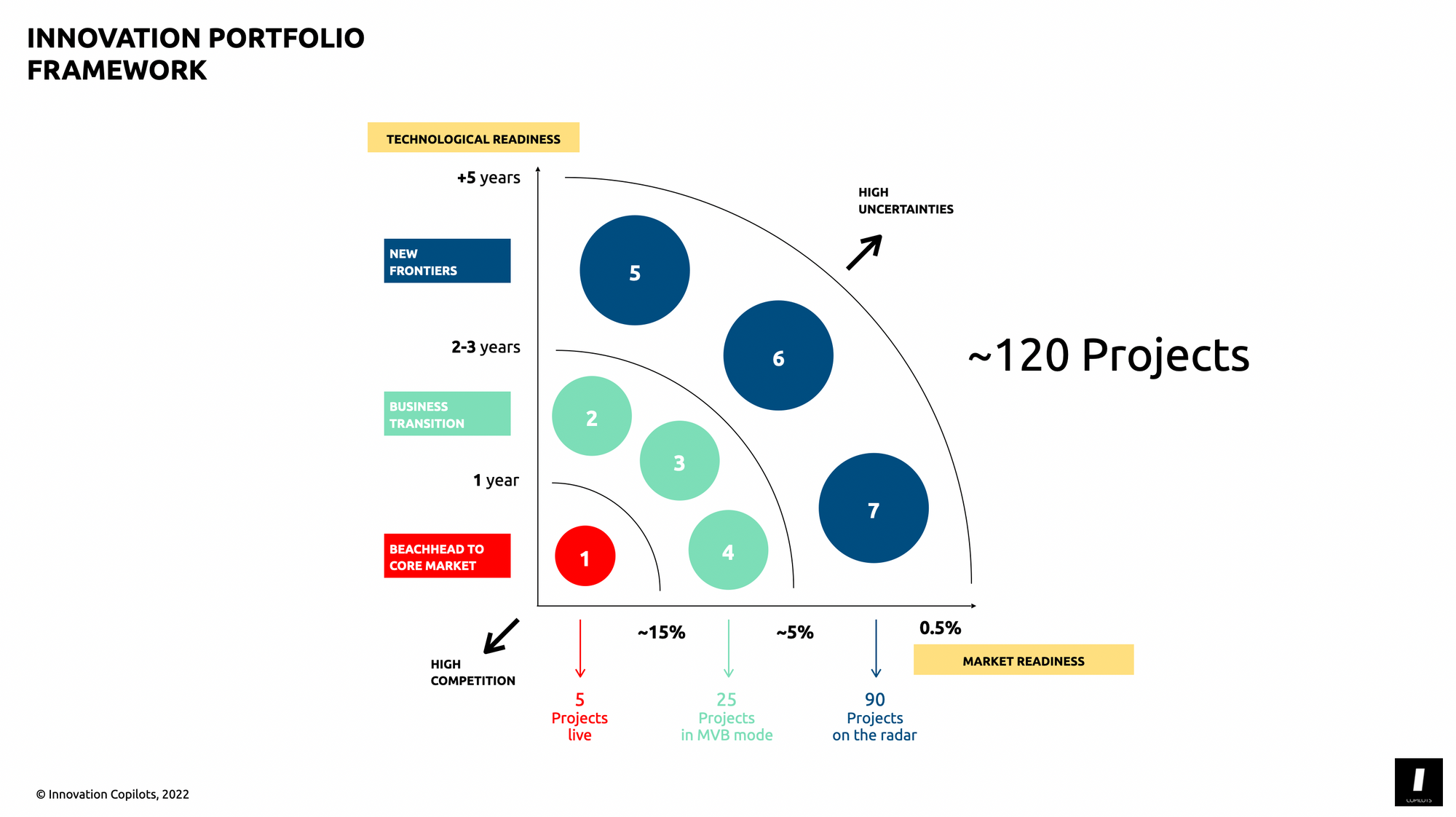
- Define what is short-, medium-, and long-term in the context of the corporations' market.
- Dissociate the type of uncertainties that are predominantly linked to the evolution of technology and those largely related to customer evolutions (demographic, societal, etc.).
- Map out what is currently explored for this business in the seven different zones defined as shown below, and highlight the gaps and blind spots.
- Fill them in.
- For each level of uncertainty (here, they are only 3), define specific 2-3 ROIs.
Please be mindful; I don't intend to give a step-by-step. I want to illustrate fundamental principles that are, in my experience, mandatory to get things working.
Different zones, different logic
With this setup, you will have to work with different actors and different internal groups operating in the different zones of the portfolio.
New Frontiers Zone
The top part of the portfolio is about exploring the new frontiers of the business. R&D and Deeptech are in zone (5), but they're not the only important ones. Sadly, zones (6) and (7) are usually vastly ignored, except for some incredibly consumer-focused corporations, such as P&G or L'Oréal.
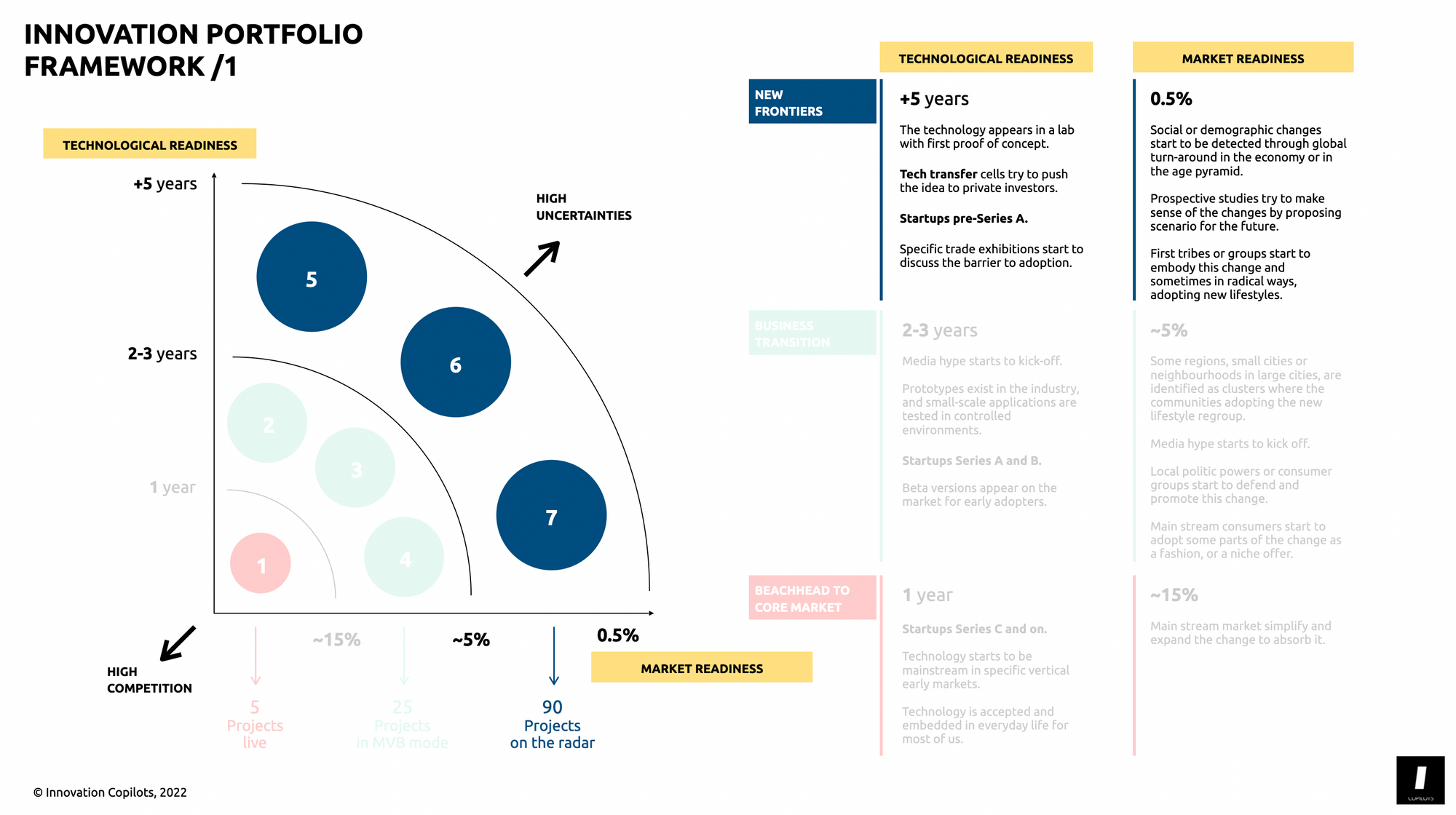
In these zones, uncertainties are too high even to pretend that anyone could write a business plan. Don't even try. The only way to play here is to invest minimal resources to cover as many options as possible and keep your finger on the pulse. You're not trying to de-risk your business yet; you're trying to de-risk opportunities.
Here, the key ROIs that should be expected is about disproving future dead-ends, deflating technology hype, finding new partners ahead of the curve, sampling societal changes before they hit you in the face, etc.
Business transition zone
The intermediate part of the portfolio is usually the tricky one. It's where new opportunities might coalesce into emerging businesses. It's very much a test and learns zone, where you're all in prototyping (or investing in) minimum viable businesses.
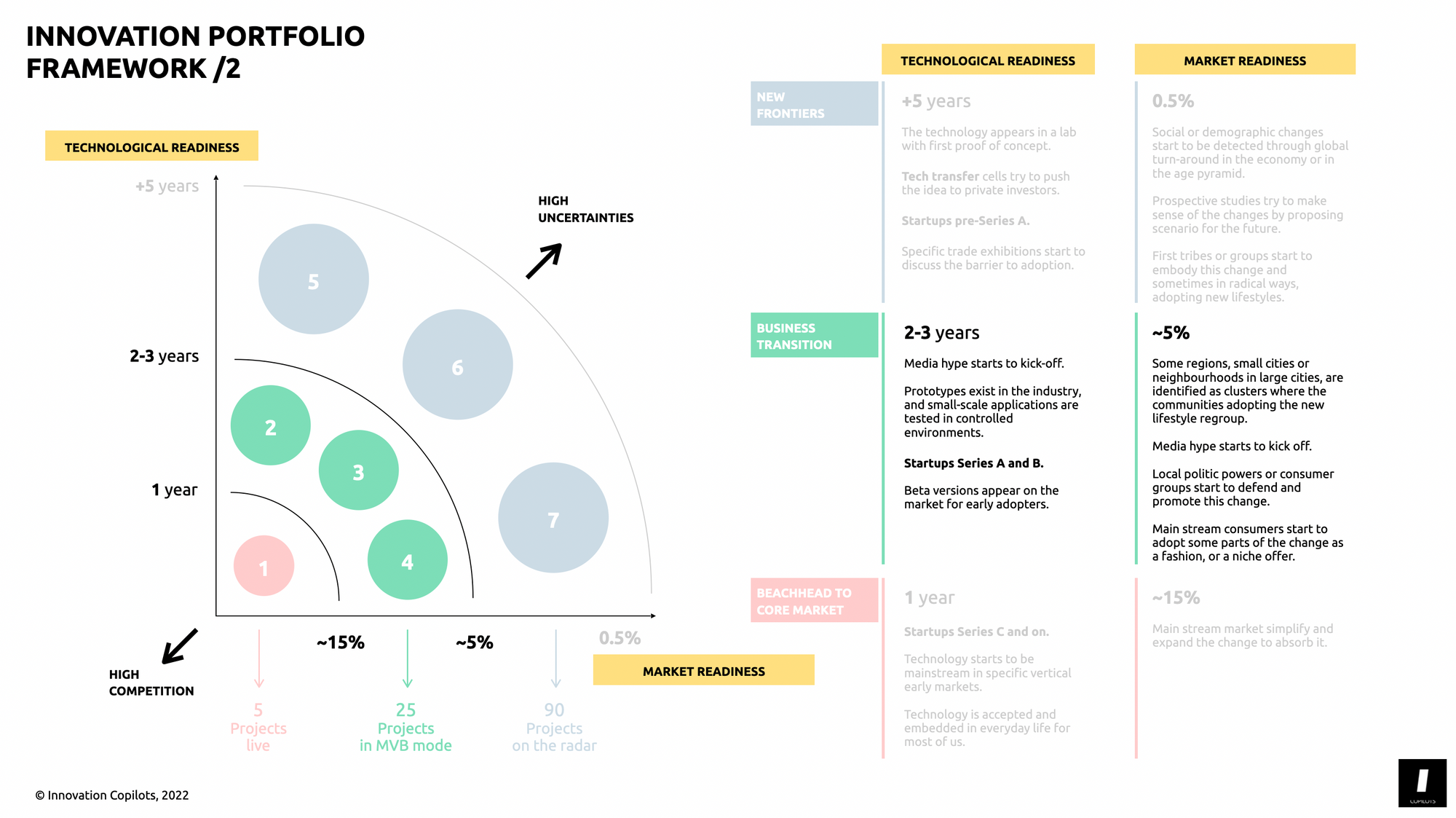
The key ROIs here are about testing new market opportunities before your competitors. Still, the main trap here is to want each of your tests in that zone to become a 'win.' They will still fail (a lot) because the transition from innovation to market is never linear. So, you need to be committed but not over-invested. And given that projects in that zone will still fail to build them around RATs and with, shared post-mortems are mandatory.
Another trap that most industries fall into in that zone is that they start to only think about products, whereas all hypotheses about the business models are still open. It's not only about design thinking but also testing price vs. value, distribution channels vs. future cist structure, etc.
Beachhead to the core market
The last is weirdly omitted from most innovation portfolios or dismissively called the 'execution' zone. It's a grey zone that is getting more important to deal with with all the volatilities building around us. The beachhead to the core market is not yet the early core market. It's where you land if you manage to cross the chasm and then keep on tweaking before launching in the earlier core market.
The simplest way to explain it would be to say it's the zone where you do your typical innovation pipeline but compressed over 6-12 months, not 3 years.
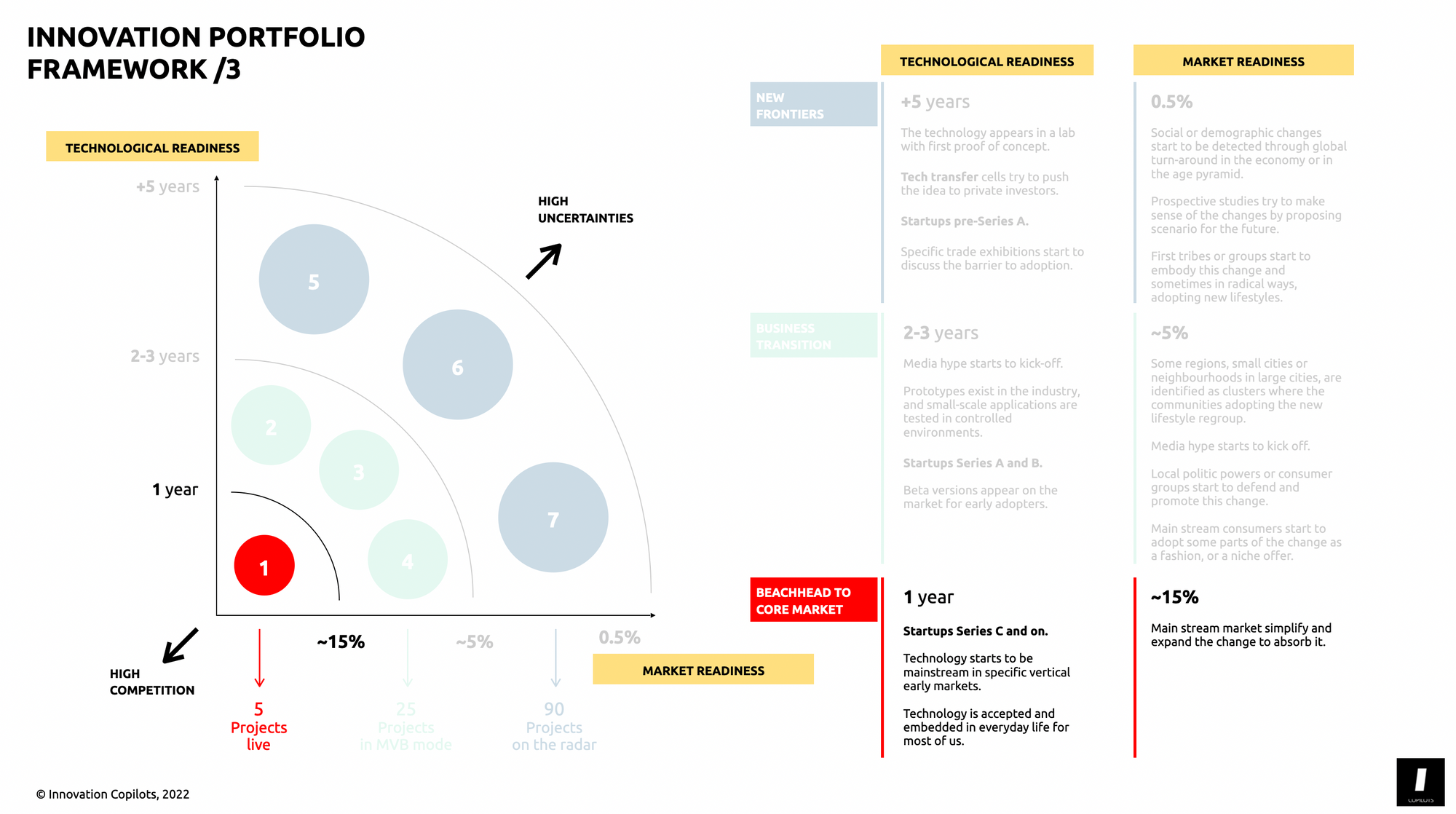
The key ROIs are about effective competitors catch-up, preparing a new business for aggressive scale-up, and already exploring cross-sales or up-sales of an innovation.
Innovation is non-linear!
With all this in mind, I wouldn't want you to be under the impression that we are still building a pipeline of some sort, where projects would navigate from the new frontiers zone to the beachheads.
When you understand how an innovation portfolio works, you know that you don't need projects to crossover or 'mature' from top to bottom.
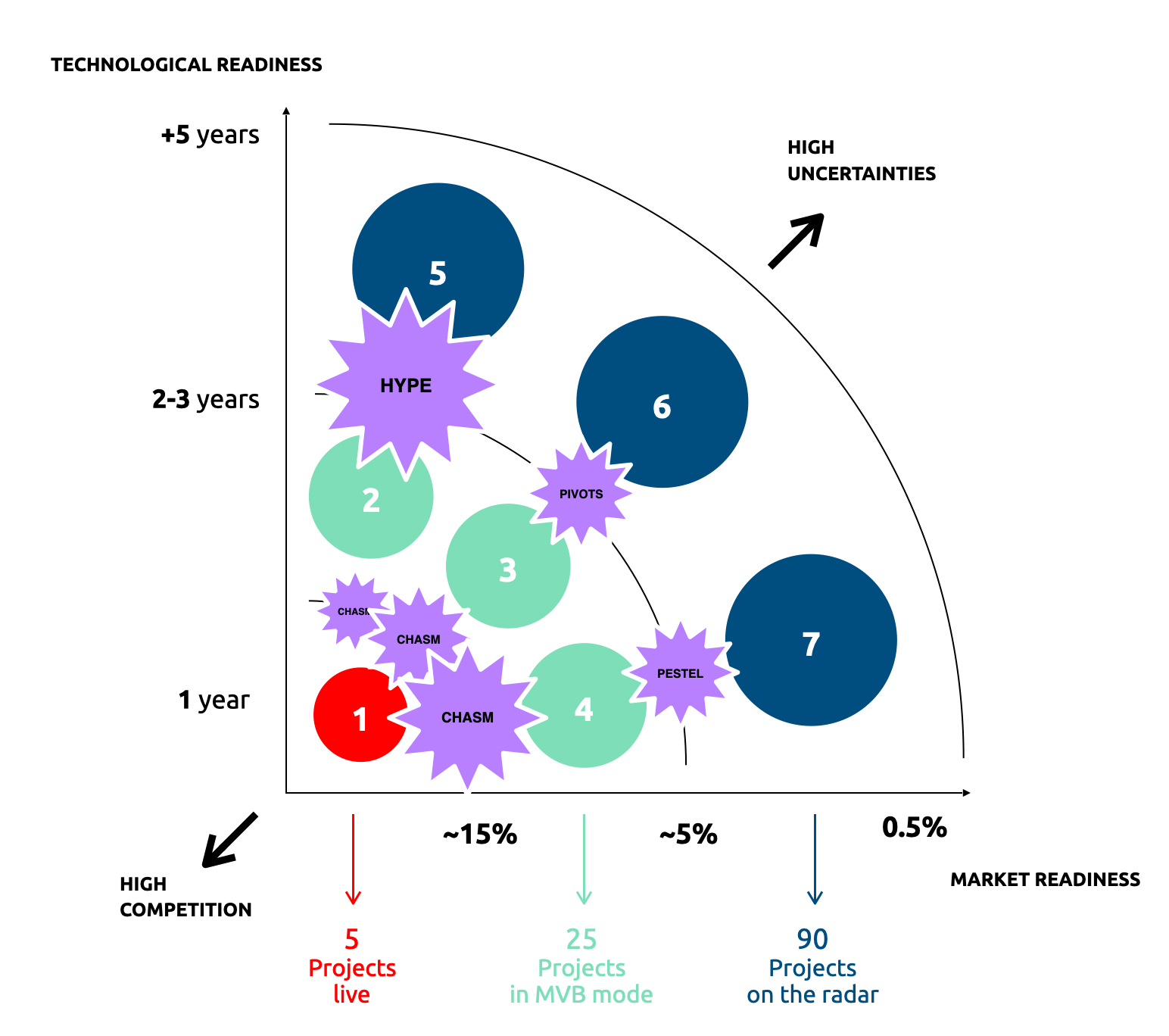
Firstly, because there are a lot of disconnects between these zones.
For instance, when you are in zone (5), early technologies cycle through many iterations before stabilizing and unlocking scale potential and cost-efficiency. Gartner's hype cycles summarize that these iterations are always initially over-hyped and, later on, underestimated. When exploring this zone, you can expect to debunk wrong expectations about some technologies and end up flagging some as a dead-end (despite current experts' opinions). Don't be mistaken; this is a massive ROI for a large corporation in terms of future budget allocation, brand value, and, most importantly, cost of opportunities.
But also because it's not a linear game.
When giving this general rule of 120 projects in a portfolio (with 90 in the high uncertainty zone, 25 intermediate, and 5 possibly going live as future businesses), it's to remind you that it's out of these 120 projects that maybe 1 or 3 new businesses will eventually appear. Not because you had a 1:120 or 3:120 win ratio, but because investing in 120 projects was necessary before assessing where the market would be, acquiring the essential technology bricks, changing your business culture, and aligning your processes.
You don't need a portfolio strategy if you know where you need to be five years from now. A portfolio is a tool that resolves uncertainty so that you can tune and control but still won't be able to predict.
We're building optionality at different levels of the uncertainty spectrum.
The ROI of an innovation program is not predicting where the next big success will be. No one can. It appears when you have created enough options to have several steps ahead no matter what. And to be able to activate them quickly with a thoughtful diversity of talents.
And it's an ongoing process.
In Part 2 of this series, we discuss optionality further and dig deeper into the quantitative aspect of the portfolio. Where does the "120" come from? Is it a strict rule? How to achieve this if you're not a trillion-dollar company?

And Part 3 will conclude with critically important elements embedded in your corporate culture regarding establishing an innovation portfolio.





